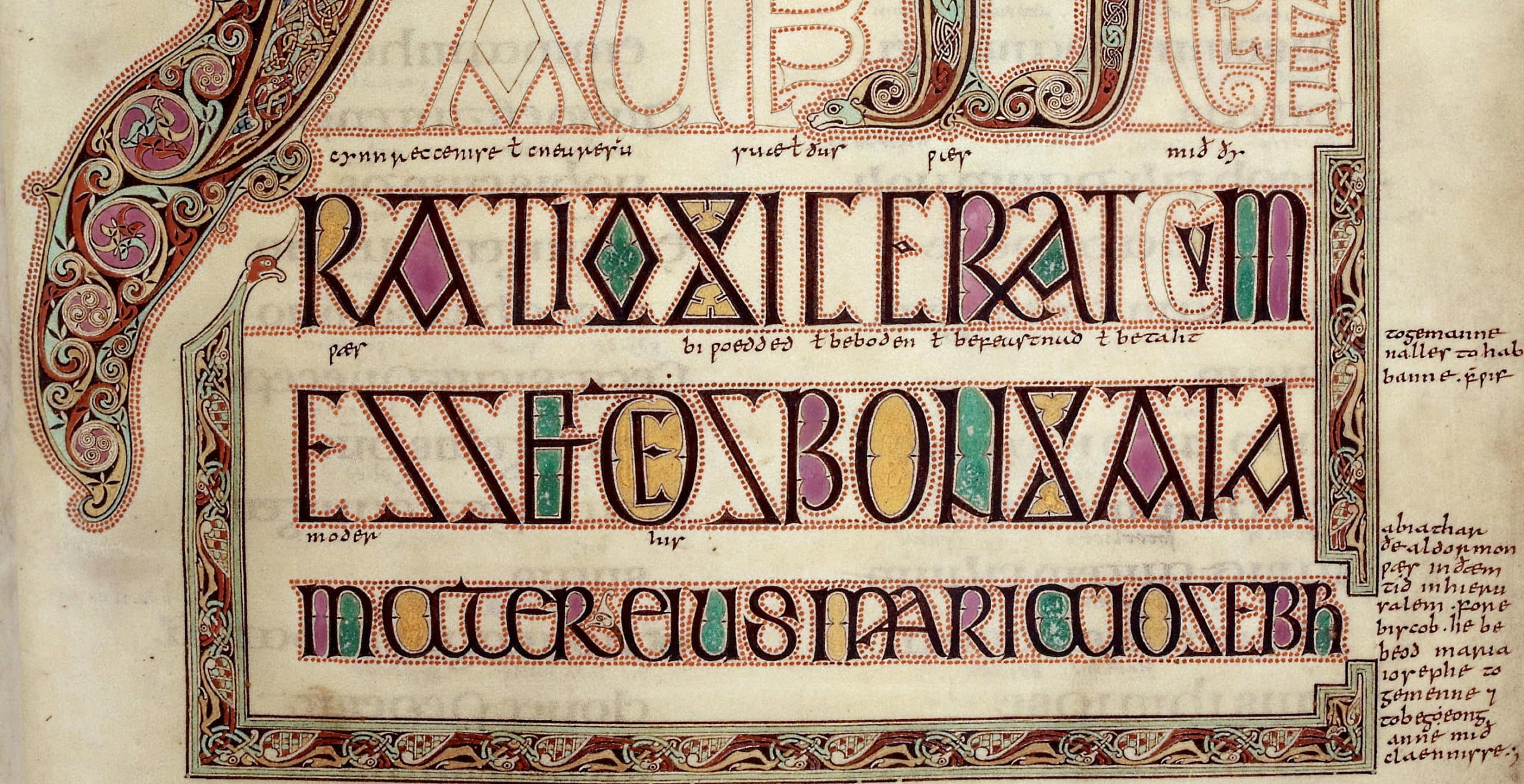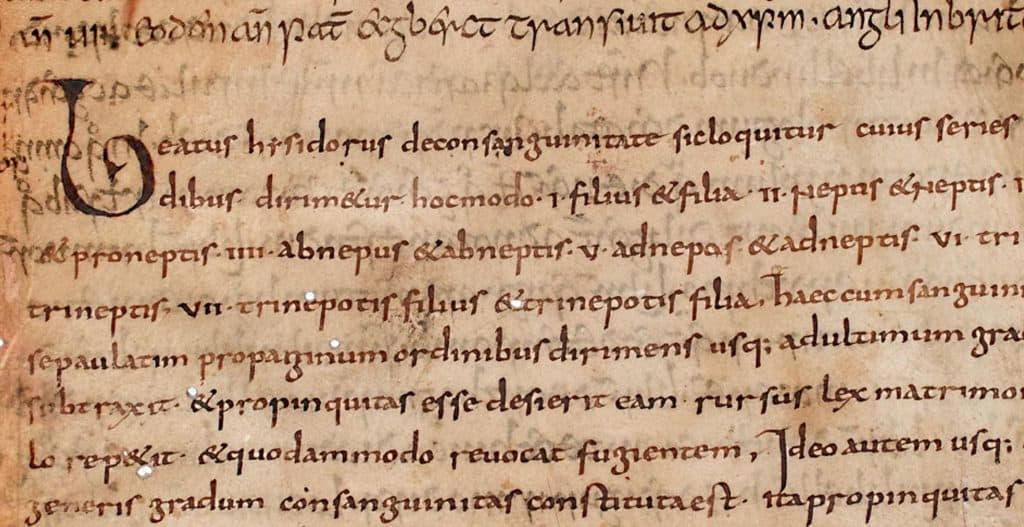It is possible that the inventor of the concept of the English was actually Pope Gregory the Great, when around 580 noticing fair haired slaves for sale in an Italian marketplace he was told that they were Angles: ‘Not Angles, but angels’ was said to be his reply. Whether this story is true or not, what is known is that in 596 AD Pope Gregory dispatched a Roman mission of 40 monks headed by Augustine, the prior to the Benedictine monastery of St. Andrew in Rome, to convert these pagan ‘angels with dirty faces’ to Roman Christianity.

Although the inhabitants of lowland Britain at that time were in fact made up of many rival kingdoms, including Saxons, Jutes and Angles, Pope Gregory considered them as one English nation, only ever referring to them as ‘Angli’.
The dramatic story of what unfolded was recorded by Beada, or Bede, a monk of the great Northumbrian monastery of Jarrow. Today, Bede is widely recognised as the greatest Anglo-Saxon scholar of his day, and by many as the greatest English historian of all time.
So, who was this humble monk and what are the stories he recorded that have earned him such accolades? It is thought that Bede was born in Monkton, Durham, however there is no record of his very early life or family background.
At the age of seven however, he was put into the care of Benedict Biscop, who in 674 AD had founded the monastery of St Peter at Wearmouth. Just a few years later, in 682 AD, Bede moved to St Peter’s twin monastery at Jarrow where he spent the rest of his life, surrounded by the hundreds of book s and manuscripts that had been collected from all corners of Christendom.

During his lifetime Bede wrote around 40 books, dealing mainly with theology and history. With a special interest in numbers, he spent much time and effort investigating such things as the Church calendar, in particular attempting to calculate the precise date of Easter. Bede’s studies in this area also popularised the division of time into the BC and AD system that we still use today.
His most famous work however, is ‘Historia Ecclesiastica Gentis Anglorum’ or ‘The Ecclesiastical History of the English People’ which was completed in 731 AD. In this work, Bede details the history of the conversion of the English to Christianity from the time of St Augustine through to the early eighth century.
In the 200 years following Augustine’s arrival, it records the many stories of how the English went from being pagan to being Christian. Written in Latin, Bede reveals how this dramatic conversion was achieved, starting at the top with the local tribal kings, queens and warriors. On a lighter side, he also records how King Redwald of East Anglia couldn’t resist backing both horses by constructing a building with a Christian altar at one end and a pagan one at the other.
His writings reveal how the values of Christianity were implanted and integrated within the violent warrior society that existed at that time. Written towards the end of his life and dedicated to King Ceolwulf of Northumbria, ‘The Ecclesiastical History’ represented the culmination of Bede’s lifetime’s work. In it, not only did he leave a coherent record of the heroic foundation of early Christianity in England, but it also set an example of how this was successfully achieved.

Bede died in his cell at the monastery in May 735 AD. His works however remained immensely popular and influential; they were copied and dispersed across Europe, but it was back in England that they helped to inspire future generations.
Alfred the Great in particular adopted the model provided by Bede – in that the English were a single people that could be united under a single ruler. It was Alfred that referred to his people not as Saxons but as ‘Angelcynn’ – ‘Englishkind’, whose language was ‘Englisc’ Translating the works of Bede into English, Alfred set about building a nation by combining the customs of Wessex, Mercia and Kent with the teachings and laws of the church.
Although the monasteries of Wearmouth and Jarrow were ransacked by the Vikings in the eighth century, human remains thought to be those of Bede were discovered in the eleventh century and removed to Durham Cathedral. His tomb can still be seen in the Galilee Chapel.
Published: 22nd May 2017









